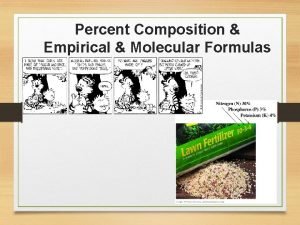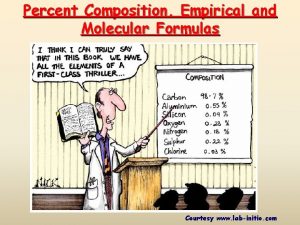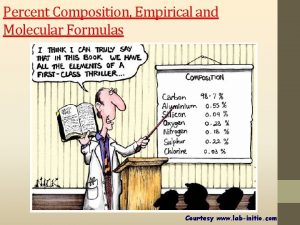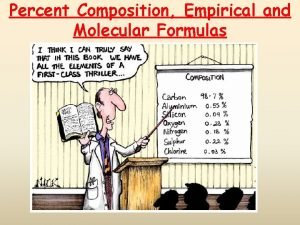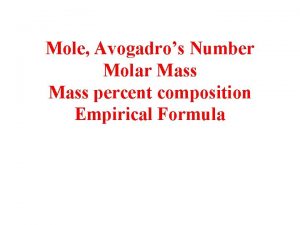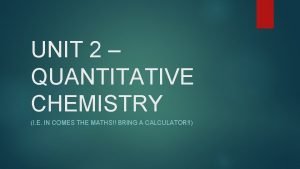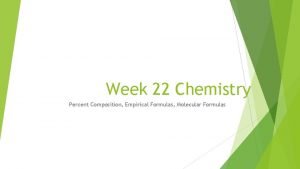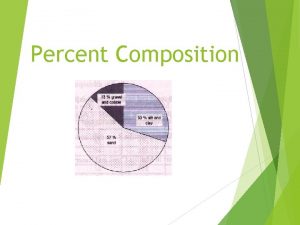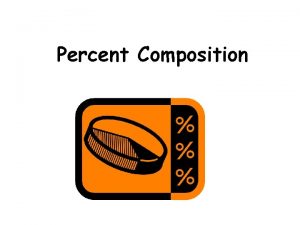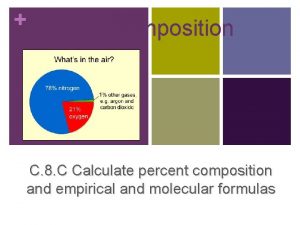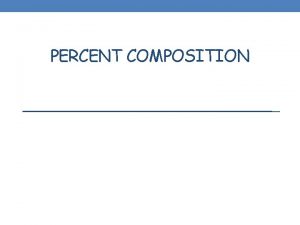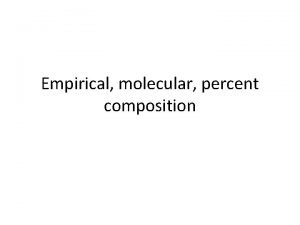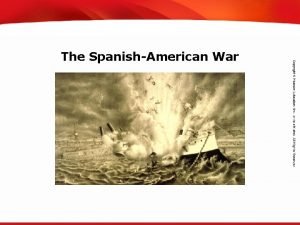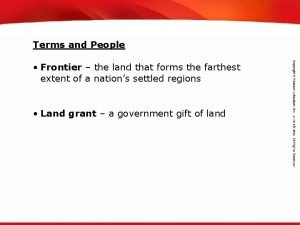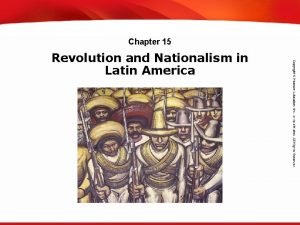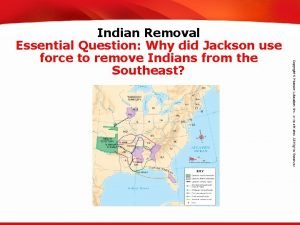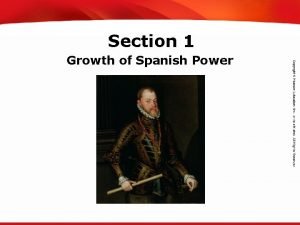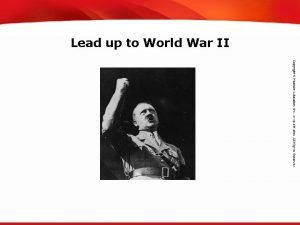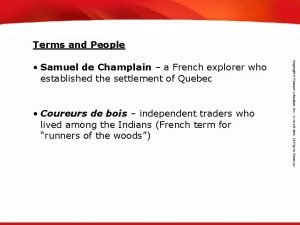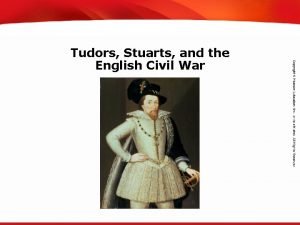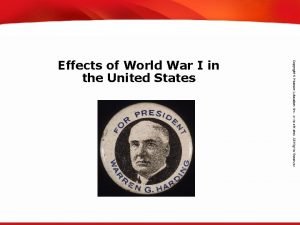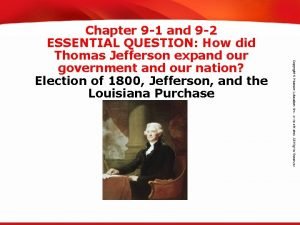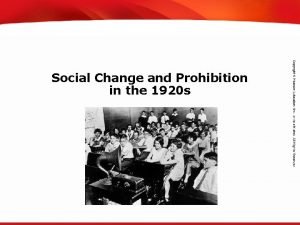TEKS 8 C Calculate percent composition and empirical

















- Slides: 17

TEKS 8 C: Calculate percent composition and empirical and molecular formulas. Civil War Turning Points

TEKS 8 C: Calculate percent composition and empirical and molecular formulas. Objectives • Explain what the Union gained by capturing Vicksburg. • Describe the importance of the Battle of Gettysburg. • Analyze how the Union pressed its military advantage after 1863.

TEKS 8 C: Calculate percent composition and empirical and molecular formulas. Terms and People • siege – military tactic in which an enemy is surrounded and all supplies are cut off in an attempt to force a surrender • Vicksburg – Confederate stronghold on the Mississippi River that surrendered to Union forces in 1863 after a siege • Battle of Gettysburg – battle in 1863 in which Confederate troops were prevented from invading the North; resulted in 50, 000 casualties • George Pickett – leader of the South’s bloody assault on the Union-held Cemetery Ridge at Gettysburg

TEKS 8 C: Calculate percent composition and empirical and molecular formulas. Terms and People (continued) • Gettysburg Address – speech by President Lincoln in which he dedicated a national cemetery at Gettysburg and reaffirmed the ideas for which the Union was fighting • total war – military strategy in which an army attacks not only enemy troops but the economic and civilian resources that support them • William Tecumseh Sherman – Union general, practiced total war as he marched through and conquered Georgia

TEKS 8 C: Calculate percent composition and empirical and molecular formulas. How did the Battles of Vicksburg and Gettysburg change the course of the Civil War? After having only limited success, the North won some significant battles in 1863. Though the fighting continued, the year 1863 marked the beginning of the end for the Confederacy.

TEKS 8 C: Calculate percent composition and empirical and molecular formulas. In the Mississippi Valley To win the war, the Union had to gain control of Vicksburg on the Mississippi River. This was key to the North’s Anaconda Plan to gain control of the river and to cut the South in half.

TEKS 8 C: Calculate percent composition and empirical and molecular formulas. Union General U. S. Grant’s strategy to take Vicksburg • He captured the Mississippi state capital at Jackson. • He gained control of the main rail line into Vicksburg and cut off all supplies. • He placed Vicksburg under siege.

TEKS 8 C: Calculate percent composition and empirical and molecular formulas.

TEKS 8 C: Calculate percent composition and empirical and molecular formulas. After learning that Vicksburg had fallen on July 4, 1863, the last Southern stronghold on the Mississippi, a garrison at Port Hudson, Louisiana, surrendered in days. The Union had split the South in two.

TEKS 8 C: Calculate percent composition and empirical and molecular formulas. In the East • Taking high casualties, the Union lost battles against Confederate General Lee at Fredericksburg (December 1862) and at Chancellorsville, Virginia (May 1863). • After the Union army failed in its attempts to defeat Lee, Lincoln appointed various commanders-in-chief. • Lee made the decision to once again invade the northern territory to demoralize the Union and force an end to the war.

TEKS 8 C: Calculate percent composition and empirical and molecular formulas. Lee’s army met Union troops at Gettysburg. The Union saw the significance of Lee’s invasion of northern territory. The Union sent 90, 000 soldiers to fight Lee’s army of 77, 500 soldiers.

TEKS 8 C: Calculate percent composition and empirical and molecular formulas. Battle of Gettysburg • Lasted three days • Considered the bloodiest battle ever fought on U. S. soil • Caused more than 50, 000 southern and northern men to be killed or wounded • Turning point of Civil War

TEKS 8 C: Calculate percent composition and empirical and molecular formulas. Lee won the battle on the first day, but by the third day the Union was better positioned. The Union (blue) was located on high ground south of the town. Confederate (red) General George Pickett heroically led his men to roust the Union. They failed. Lee and his army retreated back to Virginia.

TEKS 8 C: Calculate percent composition and empirical and molecular formulas. To honor all the fallen soldiers, President Lincoln delivered the Gettysburg Address four months after the battle. “[W]e here highly resolve that these dead shall not have died in vain; that this nation shall have a new birth of freedom; and that this government of the people, by the people, for the people, shall not perish from the earth. ” —Abraham Lincoln, November 19, 1863

TEKS 8 C: Calculate percent composition and empirical and molecular formulas. In early 1864, Lincoln put Grant in charge of the entire Union military effort. Once in command of the Union forces, Grant followed a strategy of total war and pursued Lee relentlessly all the way to Richmond.

TEKS 8 C: Calculate percent composition and empirical and molecular formulas. On his march to the sea through Georgia, in May 1864, Union General William Tecumseh Sherman also practiced the strategy of total war. Sherman and his men tore up railroad tracks, destroyed buildings, and vandalized private homes. They forced people out of the city of Atlanta and then burned it. Southerners called the general “Sherman the Brute. ”

TEKS 8 C: Calculate percent composition and empirical and molecular formulas. The presidential election of 1864 pitted Republican Abraham Lincoln against Democrat George Mc. Clellan. Lincoln Mc. Clellan Criticized by some for seizing too much authority Was former Union commander Won 212 of the 233 electoral votes Received 45 percent of the popular vote With Lincoln reelected, the South lost all hopes the Union would negotiate a peace.
 How to get empirical formula from percentages
How to get empirical formula from percentages Percentage composition of ch3cooh
Percentage composition of ch3cooh Molecular formula equation
Molecular formula equation How to find empirical formula from percentages
How to find empirical formula from percentages Empirical formula to percent composition
Empirical formula to percent composition How to find empirical formula from percent
How to find empirical formula from percent How to calculate empirical formula using percentages
How to calculate empirical formula using percentages How to calculate empirical formula using percentages
How to calculate empirical formula using percentages How to find mass percent composition
How to find mass percent composition Moles of water
Moles of water Percent composition examples
Percent composition examples Valid percent and cumulative percent
Valid percent and cumulative percent Percent composition of m&m lab
Percent composition of m&m lab Water percentage composition
Water percentage composition Definition of percent composition
Definition of percent composition Mass percent formula
Mass percent formula Chemistry percent composition
Chemistry percent composition Nitrogen percent composition
Nitrogen percent composition

